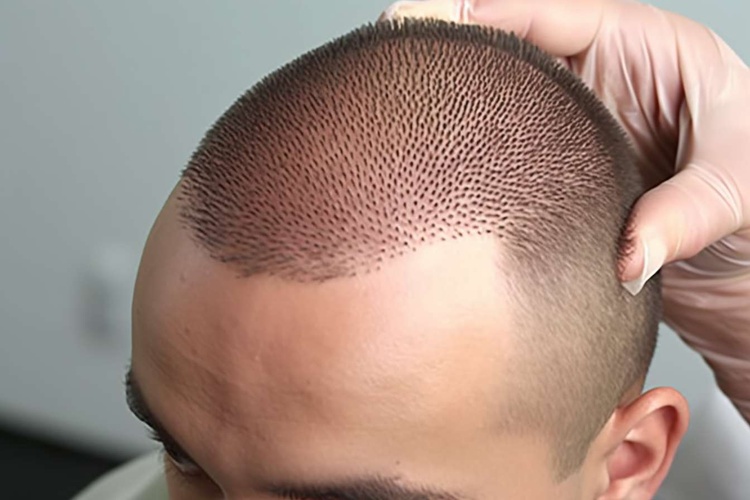Liposuction Explained: Surgical Fat-Removal Essentials
Explore how liposuction targets stubborn pockets of fat to refine body contours. This in-depth guide covers common treatment areas, modern techniques and safety data, non-surgical alternatives, expected costs, and realistic recovery timelines to help you weigh surgical body-contouring options.

Liposuction remains a leading option for people who want targeted reduction of localized fat deposits that do not respond well to diet and exercise. Rather than a primary tool for weight loss, it is best understood as a contouring procedure that reshapes problem areas to improve overall proportion. Advances in methods and devices have made outcomes more consistent and recovery easier when the operation is performed by experienced, board-certified surgeons and followed by appropriate aftercare.
Areas commonly treated
Surgeons commonly use liposuction to sculpt regions where persistent fat tends to collect. Typical sites include the abdomen, flanks (love handles), inner and outer thighs, hips, buttocks, upper arms, and the neck and submental area beneath the chin. Depending on health status, the amount of tissue involved, and the surgeon’s evaluation, several areas can often be treated in a single session.
Liposuction is flexible: it can target small, focused deposits such as submental fat or remove larger volumes from the abdomen and thighs. Treatment planning is individualized and takes into account skin elasticity, body proportions, previous surgeries, and the patient’s aesthetic goals to determine the appropriate approach.
Evidence, safety, and modern techniques
Clinical studies and surgical series report good satisfaction rates when liposuction is performed by qualified surgeons and patients maintain realistic expectations. Because the procedure eliminates fat cells from treated zones, those cells do not regrow. However, remaining fat cells can enlarge if a patient gains weight, which may alter the appearance of the treated area over time.
Contemporary methods have enhanced both safety and comfort compared with older techniques. Common modern approaches include tumescent liposuction, power-assisted liposuction (PAL), and energy-assisted options such as ultrasound-assisted (UAL) or laser-assisted liposuction. These refinements commonly reduce intraoperative blood loss, diminish postoperative bruising, and can shorten recovery.
Despite improvements, liposuction carries potential complications: wound infection, contour irregularities, asymmetry, temporary changes in sensation or numbness, seroma formation (fluid collections), and rare but serious systemic complications. A thorough preoperative assessment, strict sterile technique, and close postoperative follow-up are essential to minimize risk.
Non-surgical options vs surgical liposuction
For patients preferring less invasive routes, several non-surgical fat-reduction technologies are available. These treatments typically involve minimal downtime but tend to produce more modest contour changes and often require multiple sessions to reach desired results. Non-surgical options can be an attractive choice for mild-to-moderate localized fat or for patients who are not surgical candidates.
| Treatment Type | Estimated Fat Reduction | Typical Recovery | Sessions Required |
|---|---|---|---|
| Traditional Liposuction | 20–80% | 1–2 weeks | 1 session |
| Cryolipolysis (CoolSculpting) | 20–25% | Little to none | 2–4 sessions |
| Ultrasound-assisted therapy | 15–20% | None | 3–4 sessions |
| Radiofrequency-based treatments | 15–20% | None | 4–6 sessions |
Prices and cost estimates mentioned are approximate and subject to change; confirm current pricing before making financial decisions.
While non-surgical procedures reduce interruption to daily life, they are generally better suited for smaller volume reductions. If substantial fat removal or simultaneous contouring and skin tightening in one procedure is desired, surgical liposuction is frequently the more efficient solution.
Cost drivers and recovery expectations
The price of liposuction varies widely depending on several factors: how many and which areas are treated, geographic location, the surgeon’s experience and reputation, facility and anesthesia fees, and whether additional procedures are performed concurrently. A frequently quoted range is roughly $3,000 to $8,000 per treatment area, though actual quotes can fall above or below this range.
Recovery differs by patient and the scope of surgery, but many people can anticipate:
- An initial recovery window of about 1–2 weeks before resuming most daily activities.
- Return to sedentary or desk-based work often within one week if pain is manageable and mobility is sufficient.
- Gradual resolution of swelling and bruising over several weeks.
- Final contour definition appearing between 3 and 6 months as tissues settle and scars mature.
Adhering to postoperative instructions is crucial: wear recommended compression garments, avoid heavy lifting and strenuous exercise for the prescribed interval, attend scheduled follow-ups, and report any worrisome symptoms promptly to your surgical team.
Choosing wisely: is liposuction right for you?
A decision to pursue liposuction should begin with a thorough consultation with a board-certified plastic surgeon. Important considerations include having realistic expectations, seeking localized contour correction rather than generalized weight loss, and understanding both benefits and risks. During consultation, the surgeon will review your medical history, evaluate skin quality and body proportions, and recommend the technique that best aligns with your goals.
Ask to see before-and-after photos of patients with similar concerns, inquire about the surgeon’s experience and complication rates, and confirm the facility’s accreditation and anesthesia arrangements. If you have medical conditions that increase surgical risks or if your weight is not stable, the surgeon may suggest alternative treatments or postponement until it is safer to proceed.
This article is for informational purposes only and should not be considered medical advice. Please consult a qualified healthcare professional for personalized guidance and treatment.
This article is for informational purposes only and should not be considered medical advice. Please consult a qualified healthcare professional for personalized guidance and treatment.






